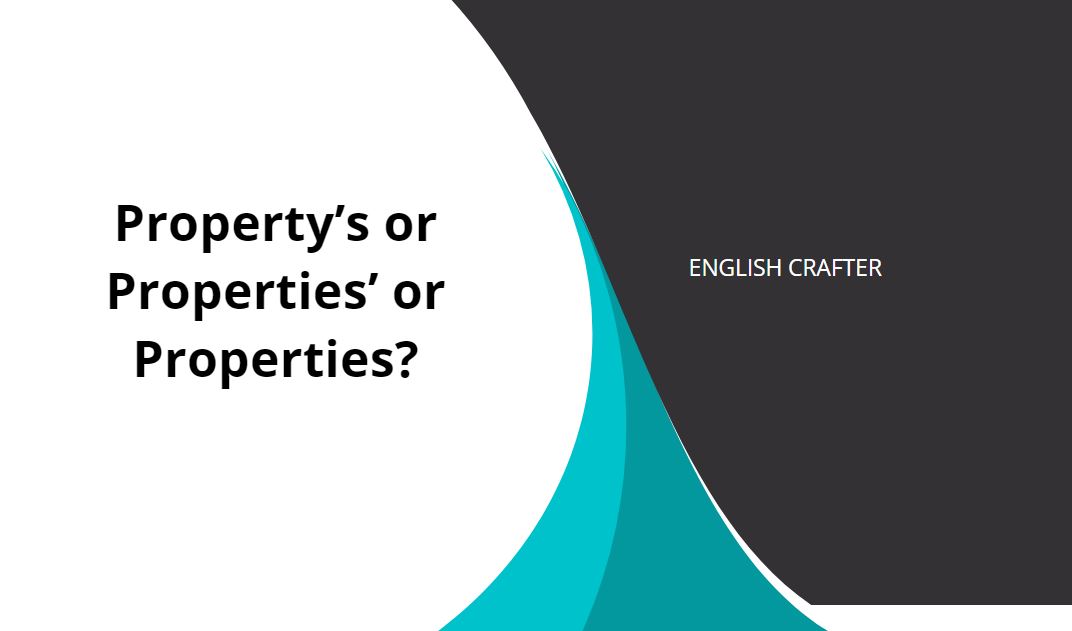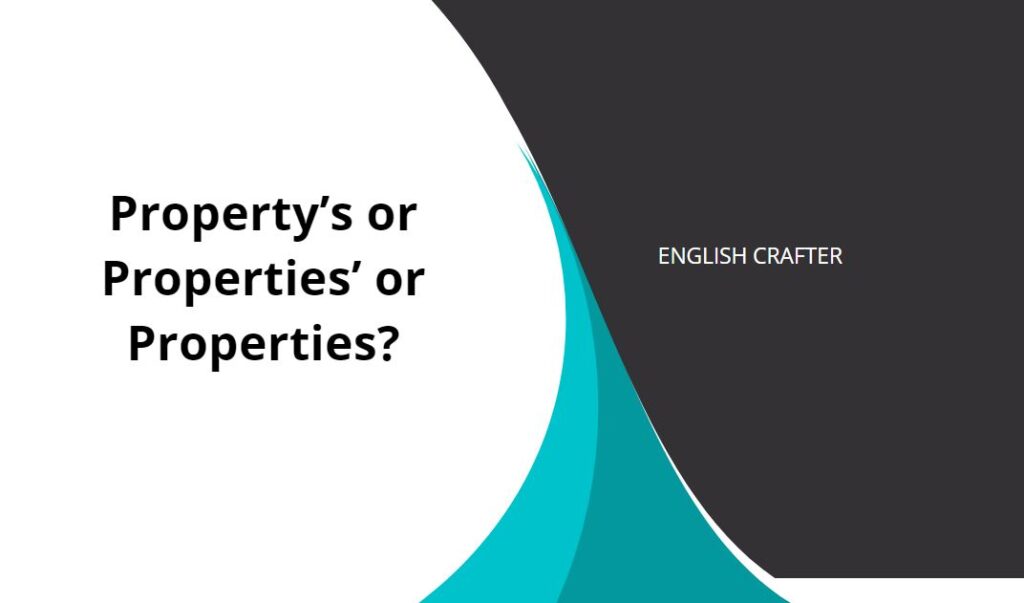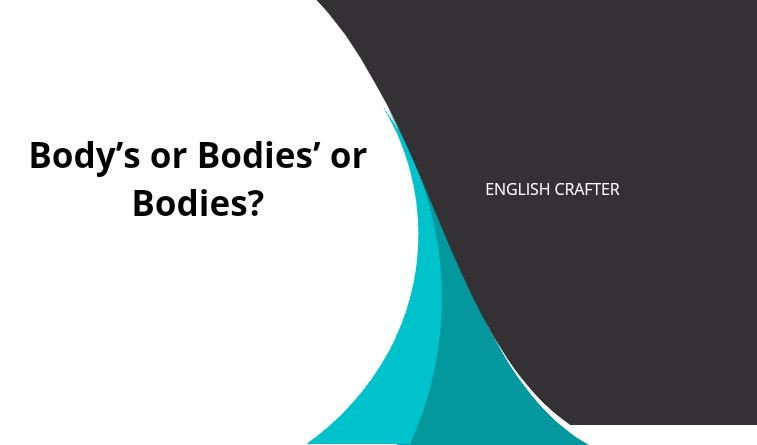Property’s or Properties’ or Properties?


“Property’s” is the singular possessive form of “property”, indicating ownership or association with a single property. For instance, “The property’s value increased significantly after renovations.” Furthermore “properties’” is the plural possessive form, used when multiple properties possess or own something. E, G, “The properties’ owners were required to adhere to strict zoning regulations.” Additionally, “properties” is the standard plural form of “property”.
The following chart outlines the different forms of the word “property”.
| Form | Example |
| Singular | Property |
| Plural | properties |
| Singular possessive | Property’s |
| Plural possessive | Properties’ |
See these examples of the four forms in context:
Singular: Investing in property can be a lucrative endeavor.
Plural: Real estate agents manage multiple properties across the city.
Singular possessive: The property’s landscaping was meticulously maintained.
Plural possessive: The properties’ amenities varied depending on location and market demand.
Continue reading the rest of this article to get more insight to avoiding mixing things up in future.
Property’s
“Property’s” is the singular possessive form of “property”, referring to things associated with a single property.
You may use the singular possessive form when you are referring to different aspects or attributes of a property:
- The property’s location played a significant role in its market value.
- My property’s boundaries were clearly marked with fencing.
- The property’s architecture blended well with its natural surroundings.
Moreover, you can also use the singular possessive to refer to characteristics or features specific to a property:
- The property’s history was steeped in tradition and heritage.
- Her property’s charm and character attracted potential buyers.
- Everyone admired the property’s panoramic views of the surrounding landscape.
Properties’
“Properties’” is the plural possessive version of “property”. Use it when you are talking about something multiple properties possess or own .
You may also use the plural possessive to refer to items or attributes shared among multiple properties:
- The properties’ owners formed an association to address common concerns and maintenance issues.
- The properties’ landscaping featured lush gardens and manicured lawns.
- A network of trails connected the properties’ recreational amenities, providing residents with easy access.
Furthermore, you may use this plural possessive form to refer to obligations or responsibilities shared among multiple property owners:
- The properties’ insurance policies provided coverage for natural disasters and liability claims.
- The properties’ maintenance fees were pooled together to fund communal services and upkeep.
- A dispute arose over the properties’ boundary lines, requiring legal intervention to resolve.
In addition, the term “properties’ values” can also be plural if referring to the collective worth or appraisals of multiple properties.
Properties
“Properties” is the plural version of “property”, used when mentioning multiple properties in non-possessive sentences.
You can use the plural form in two ways:
- To refer to a specific number of properties:
- There were ten properties listed for sale in the neighborhood, each offering unique features and amenities.
- The company owned several properties across the country, strategically positioned for maximum market exposure.
- The real estate portfolio comprised twenty properties, diversified to minimize risk and optimize returns.
- To refer to all properties in a general sense:
- Properties located in desirable neighborhoods often command higher prices in the real estate market.
- Many investors diversify their portfolios by investing in properties with varying risk profiles and potential returns.
- It’s important to conduct thorough due diligence before acquiring properties to mitigate unforeseen risks and liabilities.






